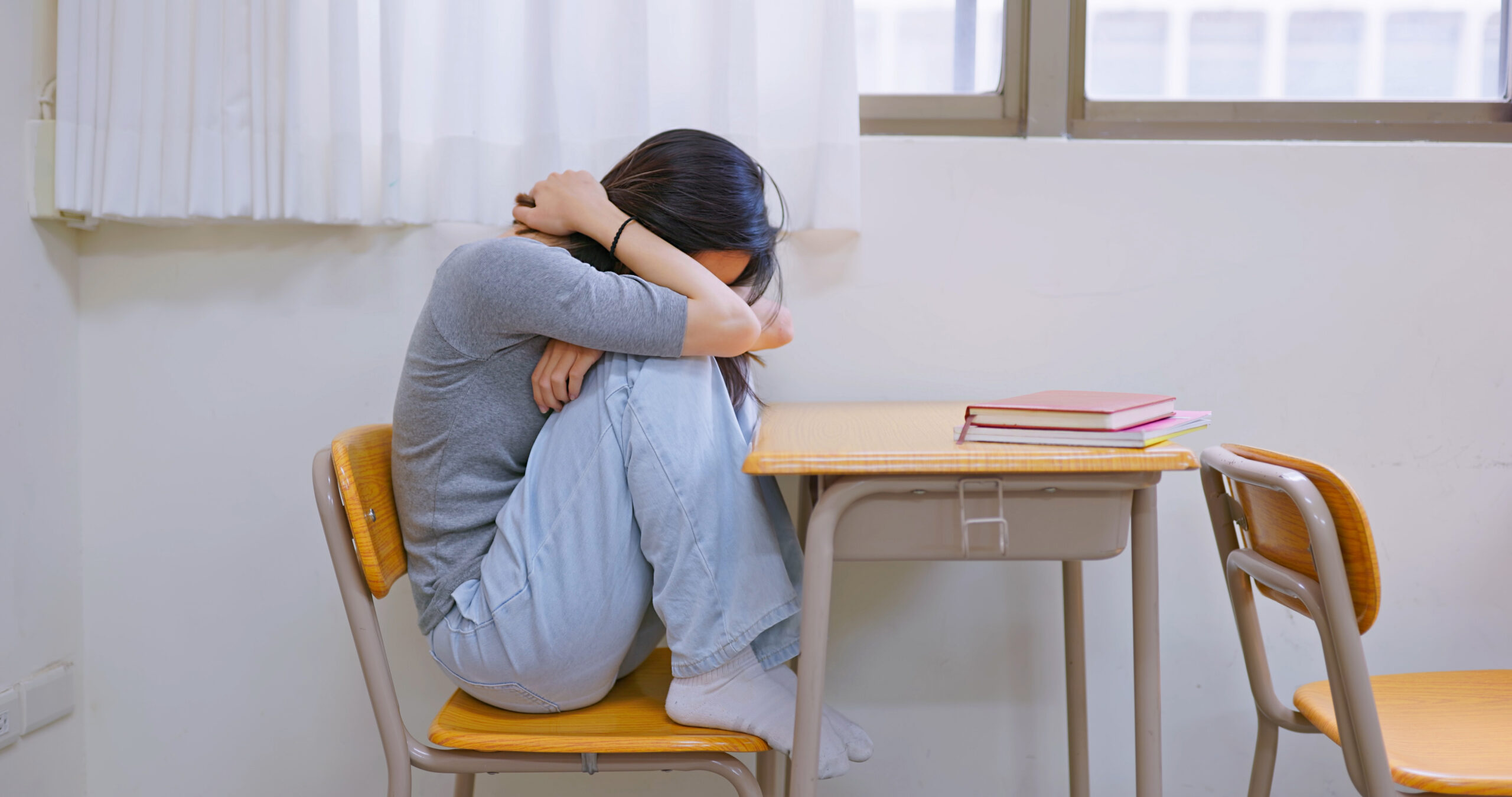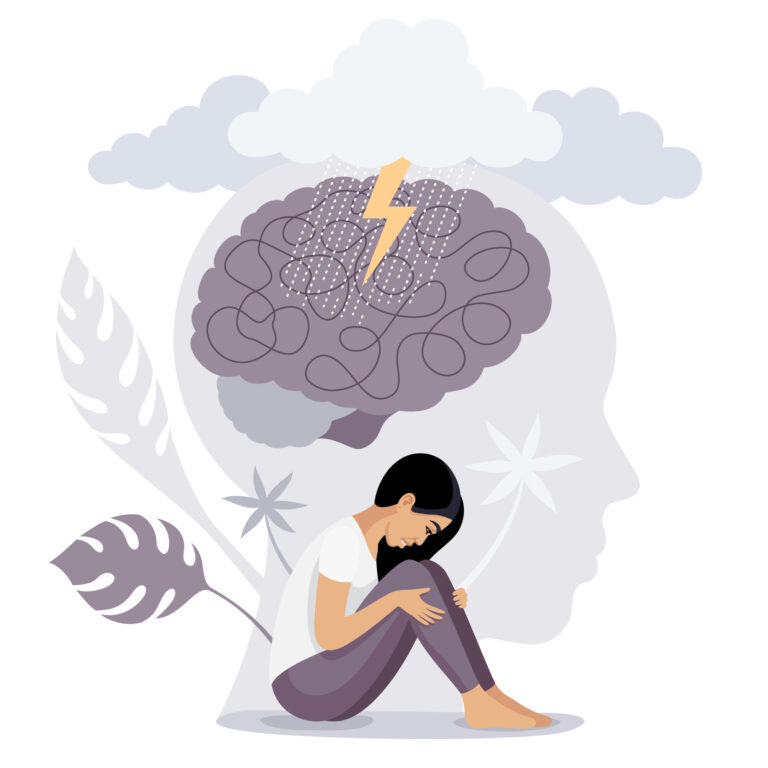Welcome to our blog post on addressing behaviour through a trauma-informed lens and strategies for cultivating a positive classroom culture. As educators, we have a profound impact on our students’ lives, and it is crucial to understand the role that trauma plays in their behaviour and overall well-being.
Trauma can have a significant impact on a student’s ability to thrive academically and socially. It can manifest in various ways, such as aggression, withdrawal, anxiety, or difficulty concentrating. By recognizing these trauma-related behaviors, we can create a safe and supportive environment that promotes healing and growth.
In this blog post, we will explore the signs and symptoms of trauma-related behavior and delve into how teachers can identify and understand the root causes behind these behaviours. Understanding the underlying trauma is crucial for implementing effective strategies in the classroom.
We will then discuss practical trauma-informed practices that can be implemented to create a positive classroom culture. These strategies include building trust and safety, teaching emotional regulation skills, promoting resilience and empowerment, and adopting inclusive and empathetic instruction strategies.
Creating a positive classroom culture is essential for fostering connection and belonging. We will explore techniques for building strong relationships with students, setting clear and consistent boundaries, promoting open communication, and creating an environment of respect and understanding.
Additionally, we will emphasise the importance of collaboration with parents, counselors, and other professionals in supporting students who have experienced trauma. We will discuss how to share information responsibly, work together for the student’s well-being, and access additional support and resources.
By addressing behaviour through a trauma-informed lens and implementing strategies to cultivate a positive classroom culture, we can create an environment where all students feel safe, supported, and empowered to reach their full potential.
Join us on this journey as we explore the powerful impact of trauma-informed practices in the classroom and discover strategies to create a positive and nurturing learning environment for all students. Let’s work together to make a difference in the lives of our students.
Understanding Trauma and Its Impact on Behaviour
Trauma is a deeply distressing or disturbing experience that overwhelms an individual’s ability to cope. It can result from a single event, such as a natural disaster or a car accident, or from ongoing, repeated experiences like abuse, neglect, or witnessing violence. Traumatic experiences can have a profound impact on a person’s physical, emotional, and psychological well-being.
When it comes to understanding trauma and its impact on behaviour, it is essential to recognise that trauma affects individuals differently. Some individuals may exhibit obvious signs of distress, while others may internalize their experiences and display more subtle behavioural changes. It is crucial for educators to develop a comprehensive understanding of trauma and its potential impact on students in order to effectively address their needs.
Trauma can significantly influence behavior, often leading to challenging or disruptive actions in the classroom. Some common behaviours associated with trauma include:
- Hyperarousal: Students may display constant alertness, hypervigilance, or an exaggerated startle response. They may be easily agitated, have difficulty concentrating, or exhibit outbursts of anger or aggression.
- Hypoarousal: On the other end of the spectrum, students may exhibit behaviors indicative of dissociation or emotional numbing. They may appear withdrawn, detached, or disengaged from their surroundings or peers.
- Emotional dysregulation: Trauma can disrupt the regulation of emotions, making it difficult for students to manage their feelings effectively. They may experience intense mood swings, have difficulty expressing emotions appropriately, or struggle with self-control.
- Avoidance: Students may actively avoid situations, people, or topics that remind them of their traumatic experiences. This avoidance can manifest as refusal to participate in certain activities, isolation from peers, or resistance to discussing sensitive subjects.
- Academic challenges: Trauma can impact students’ ability to concentrate, focus, and retain information. They may experience difficulties with memory, organisation, and problem-solving skills, leading to academic struggles.
Understanding the impact of trauma on behaviour is crucial for educators to create a compassionate and supportive learning environment. By recognizing the signs of trauma-related behaviour, teachers can respond with empathy and implement trauma-informed strategies to foster healing and growth.
In the next section, we will explore the signs and symptoms of trauma-related behavior in more detail, equipping educators with the tools to identify and address these behaviours effectively.
Identifying Trauma-Related Behaviour in Students
Identifying trauma-related behaviour in students is a crucial step in addressing their needs and providing appropriate support. While every student may express trauma differently, there are common signs and symptoms that educators can look out for. By being observant and sensitive to these indicators, teachers can identify students who may be experiencing trauma and respond with empathy and understanding.
Signs and Symptoms of Trauma-Related Behavior
- Behavioural changes: Students may exhibit sudden or noticeable changes in their behavior. This could include becoming more withdrawn, displaying sudden outbursts of anger or aggression, or engaging in self-destructive behaviors.
- Emotional dysregulation: Students may struggle with managing their emotions effectively. They may experience frequent mood swings, have difficulty calming down, or display intense emotional reactions that seem disproportionate to the situation.
- Difficulty concentrating: Trauma can impact students’ ability to focus and concentrate on tasks. They may appear easily distracted, have trouble completing assignments, or exhibit a decline in academic performance.
- Social withdrawal or isolation: Students who have experienced trauma may isolate themselves from their peers or exhibit a reluctance to engage in social activities. They may prefer to be alone or have difficulty forming and maintaining relationships.
- Hypervigilance: Students may constantly be on high alert, displaying an exaggerated startle response or an intense awareness of their surroundings. They may have difficulty relaxing or trusting others.
- Physical complaints: Trauma can manifest in physical symptoms such as headaches, stomachaches, or other unexplained physical ailments. These complaints may be a result of the stress and anxiety associated with trauma.
The Role of Teachers in Identifying Trauma
Teachers play a vital role in identifying trauma-related behavior in students. As educators spend significant time with their students, they are in a unique position to observe changes in behaviour and emotional well-being. By being attentive and proactive, teachers can provide the necessary support and intervention for students who have experienced trauma.
It is important to approach the identification of trauma-related behavior with sensitivity and without making assumptions. While certain behaviors may be indicative of trauma, it is essential to consider other factors that may contribute to these behaviors. Building a trusting relationship with students is crucial in order to create a safe space where they feel comfortable sharing their experiences.
Understanding the Root Cause
Identifying trauma-related behaviour is just the first step. It is equally important to understand the root cause of these behaviours. Every student’s experience of trauma is unique, and it is essential to approach each case with empathy and respect. Understanding the underlying trauma can help educators tailor their support and interventions to meet the specific needs of each student.
In the next section, we will delve deeper into the root causes of trauma-related behavior and explore how educators can develop a comprehensive understanding of their students’ experiences.
Implementing Trauma-Informed Practices in the Classroom
Implementing trauma-informed practices in the classroom is essential for creating a supportive and healing environment for students who have experienced trauma. By adopting these practices, educators can promote resilience, emotional well-being, and academic success. Let’s explore some key strategies for implementing trauma-informed practices in the classroom:
Building Trust and Safety
- Establish a safe and predictable classroom environment: Create clear expectations, consistent routines, and a structured classroom environment. This helps students feel secure and reduces anxiety.
- Foster positive relationships: Build trusting relationships with students by showing empathy, respect, and understanding. Take the time to listen to their concerns, validate their experiences, and provide support when needed.
- Provide physical and emotional safety: Ensure that students feel physically safe by creating a comfortable and inviting classroom space. Additionally, create an emotionally safe environment by promoting open communication and a non-judgmental atmosphere.
Teaching Emotional Regulation Skills
- Provide tools for emotional expression: Teach students healthy ways to express and manage their emotions. This can include teaching deep breathing exercises, journaling, or using calming techniques like mindfulness.
- Teach self-regulation strategies: Help students develop self-regulation skills by teaching them how to identify and manage their emotions effectively. Encourage self-reflection and provide strategies such as positive self-talk and self-soothing techniques.
- Incorporate emotional literacy activities: Integrate activities that promote emotional literacy, such as discussing emotions, recognizing facial expressions, or engaging in role-playing scenarios. These activities help students develop a better understanding of their emotions and those of their peers.
Promoting Resilience and Empowerment
- Encourage a growth mindset: Foster a belief in students that they can overcome challenges and grow from their experiences. Teach them that their abilities and intelligence can be developed through effort and perseverance.
- Celebrate strengths and accomplishments: Recognise and celebrate students’ accomplishments, both big and small. Highlight their strengths and provide opportunities for them to showcase their talents. This helps build confidence and resilience.
- Foster a sense of agency and empowerment: Provide students with choices and opportunities for decision-making. Encourage them to take ownership of their learning and provide support as they navigate challenges.
Inclusive and Empathetic Instruction Strategies
- Differentiate instruction: Recognise that students have different learning styles, abilities, and needs. Differentiate instruction to accommodate individual differences and provide additional support when necessary.
- Incorporate trauma-informed teaching practices: Use teaching strategies that are sensitive to the needs of students who have experienced trauma. This can include providing breaks, utilizing visual aids, offering alternative assignments, and allowing opportunities for movement.
- Practice cultural responsiveness: Foster an inclusive classroom environment by valuing and respecting students’ diverse backgrounds and experiences. Incorporate culturally relevant materials and perspectives into the curriculum to promote a sense of belonging.
By implementing trauma-informed practices in the classroom, educators can create a nurturing and supportive environment that promotes healing, resilience, and academic success for all students. In the next section, we will explore specific strategies for creating a positive classroom culture that supports students who have experienced trauma.
Creating a Positive Classroom Culture: Trauma-Informed Strategies
Creating a positive classroom culture is essential for supporting students who have experienced trauma. A nurturing and inclusive environment can promote healing, enhance engagement, and foster academic success. Let’s explore some trauma-informed strategies for creating a positive classroom culture:
Fostering Connection and Belonging
- Build relationships: Take the time to get to know your students on a personal level. Show genuine interest in their lives, hobbies, and aspirations. This helps create a sense of connection and belonging.
- Encourage peer connections: Foster a classroom community where students feel connected to their peers. Incorporate team-building activities, group projects, and cooperative learning opportunities. Encourage students to support and respect one another.
- Celebrate diversity: Embrace and celebrate the diversity within your classroom. Create an environment that values and respects different cultures, backgrounds, and perspectives. Teach students to appreciate and learn from one another’s differences.
Setting Clear, Consistent Boundaries
- Establish classroom expectations: Clearly communicate your expectations for behavior, participation, and respect. Ensure that students understand the boundaries and consequences for their actions. Consistency is key in maintaining a safe and structured environment.
- Implement positive behaviour reinforcement: Recognise and reinforce positive behaviors through praise, rewards, or acknowledgment. This encourages students to make positive choices and fosters a sense of achievement and self-worth.
- Use restorative practices: Instead of resorting to punitive measures, employ restorative practices that focus on repairing harm and promoting understanding. Encourage students to reflect on their actions, take responsibility, and engage in dialogue to resolve conflicts.
Promoting Open Communication
- Create a safe space for expression: Establish an environment where students feel safe to express their thoughts, feelings, and concerns. Encourage open dialogue and active listening. Respect student confidentiality and create opportunities for private conversations if needed.
- Teach conflict resolution skills: Provide students with strategies to resolve conflicts peacefully and respectfully. Teach them active listening, problem-solving, and negotiation techniques. Encourage empathy and understanding when addressing conflicts.
- Regular check-ins: Schedule regular one-on-one check-ins with students to discuss their academic progress, emotional well-being, and any challenges they may be facing. This individual attention shows students that you care about their overall development.
Creating an Environment of Respect and Understanding
- Model respect and empathy: Be a role model for respectful and empathetic behavior. Treat all students with kindness, fairness, and understanding. Encourage students to listen to and respect one another’s opinions and perspectives.
- Incorporate trauma-informed language: Use language that is sensitive to the experiences of students who have experienced trauma. Avoid triggering or stigmatizing language and provide opportunities for students to share their experiences if they feel comfortable.
- Cultivate a strengths-based approach: Focus on students’ strengths and abilities rather than their challenges or deficits. Encourage a positive mindset and help students recognise their own resilience and potential for growth.
By implementing these trauma-informed strategies, educators can create a positive classroom culture that supports the emotional well-being and academic success of all students. In the next section, we will explore the importance of collaboration with parents, counselors, and other professionals in supporting students who have experienced trauma.
Collaborating with Parents, Counselors, and Other Professionals
Collaboration with parents, counselors, and other professionals is crucial in supporting students who have experienced trauma. By working together, educators can gain valuable insights, share information, and provide comprehensive support to these students. Let’s explore the importance of collaboration and strategies for effective collaboration:
Sharing Information Responsibly
- Build open lines of communication: Establish clear channels of communication with parents, counselors, and other professionals involved in the student’s care. Regularly update and share information regarding the student’s progress, challenges, and any specific needs related to their trauma.
- Respect confidentiality: Respect the privacy and confidentiality of students and their families. Ensure that any information shared is done so with proper consent and in accordance with relevant privacy laws and regulations.
- Active listening and empathy: When collaborating with parents, counselors, and other professionals, practice active listening and empathy. Seek to understand their perspectives, concerns, and expertise. This helps build trust, fosters effective communication, and promotes a collaborative approach.
Working Together for Student’s Well-being
- Attend multidisciplinary meetings: Participate in multidisciplinary meetings that involve parents, counselors, and other professionals. These meetings provide an opportunity to discuss the student’s progress, review interventions, and develop a comprehensive plan for their well-being.
- Share strategies and interventions: Collaborate with other professionals to share effective strategies and interventions that have been successful in supporting students who have experienced trauma. Learn from one another’s experiences and expertise.
- Coordinate support services: Work collaboratively to coordinate support services for the student. This may involve connecting them with counseling services, therapy, or other resources within the school or community. Ensure that there is a seamless flow of support across different settings.
Accessing Additional Support and Resources
- Stay informed about community resources: Familiarize yourself with local community resources that can provide additional support for students who have experienced trauma. This may include mental health services, support groups, or organizations specializing in trauma-informed care.
- Professional development and training: Engage in professional development opportunities and training programs related to trauma-informed practices. Continuously update your knowledge and skills to better support students and collaborate effectively with other professionals.
- Seek consultation and supervision: If faced with complex cases or challenging situations, seek consultation and supervision from experienced professionals, such as school counselors, psychologists, or trauma specialists. Their guidance can provide valuable insights and support.
By collaborating with parents, counselors, and other professionals, educators can create a holistic support system for students who have experienced trauma. Working together, they can ensure that students receive the necessary support, interventions, and resources to heal, grow, and thrive academically and emotionally.
In conclusion, addressing behavior through a trauma-informed lens and cultivating a positive classroom culture requires a comprehensive approach that involves understanding trauma, identifying trauma-related behaviors, implementing trauma-informed practices, creating a positive classroom culture, and collaborating with parents, counselors, and other professionals. By embracing these strategies, educators can make a significant impact in supporting students who have experienced trauma and creating an environment where all students feel safe, supported, and empowered.
Related posts:
 Understanding Trauma-Informed Education: Building Resilience in the Classroom
Understanding Trauma-Informed Education: Building Resilience in the Classroom
 Building Trust and Connection: The Role of Relationships in Trauma-Informed Teaching
Building Trust and Connection: The Role of Relationships in Trauma-Informed Teaching
 Meeting the Needs of Every Student: Implementing Trauma-Informed Practices in the Classroom
Meeting the Needs of Every Student: Implementing Trauma-Informed Practices in the Classroom
 Understanding Trauma-Informed Education: Building Resilience in the Classroom
Understanding Trauma-Informed Education: Building Resilience in the Classroom



